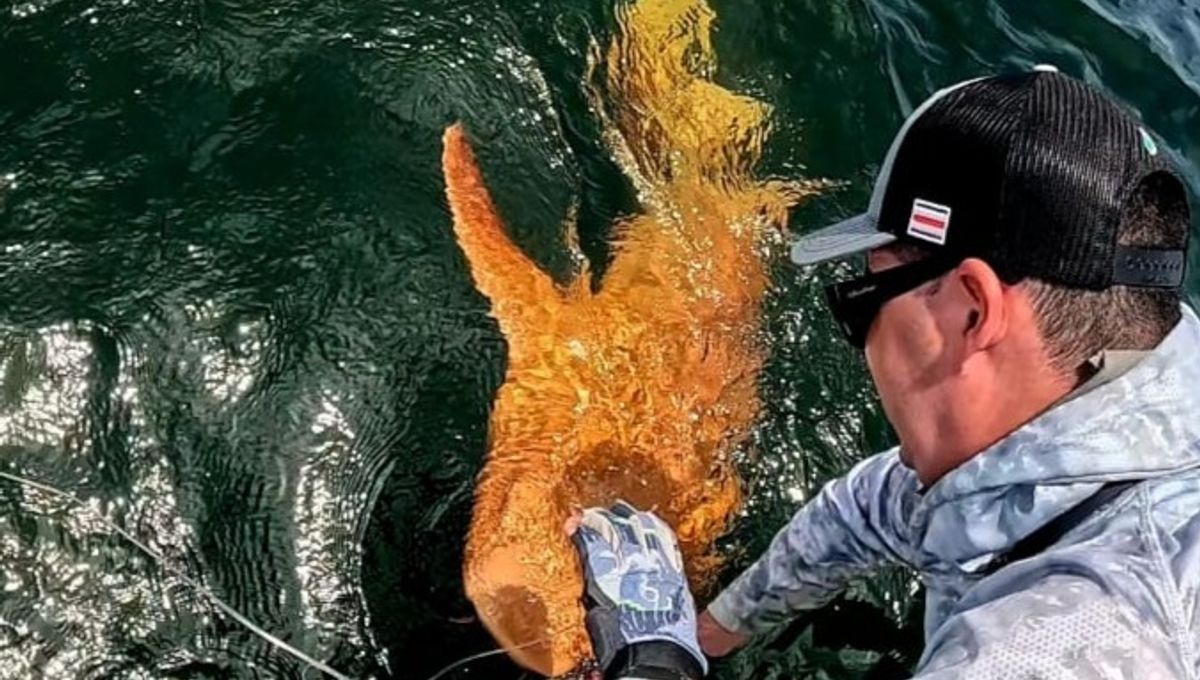
Let’s face it, the sea is full of proper freaky looking creatures, from Barbie lobsters to disco worms and everything in between. However, normally in the shark world, the species relies on sharp teeth and speed to make an impression. Well, one shark species has taken a rather different approach from stealthy gray. For the first time, a nurse shark has been recorded in the Caribbean being bright orange.
The rest of this article is behind a paywall. Please sign in or subscribe to access the full content.
The nurse shark (Ginglymostoma cirratum) was seen in Costa Rican waters during a sport fishing trip near Tortuguero National Park last year, and the photos were shared on its Facebook page. According to a new paper, the shark was captured at a depth of 37 meters (and subsequently released), was around 2 meters long (6.5 feet), and had yellow-orange skin. This indicates a condition known as xanthochromism and is the first documented case of xanthism in the species and the first record of any species in the Caribbean Sea.
It also had white eyes “with no visible irises”, instead of the typical black, which the researchers suggest indicates a rare case of albino-xanthochromism rather than just xanthism alone. Until now, there has been no documentation of partial or full xanthism in cartilaginous fishes in the Caribbean or the Pacific coasts of Costa Rica.
The cause of xanthochromism is considered to be genetic, a pigmentation condition that causes an excess of yellow-orange tones in the skin, hair, or fur of animals, similar to melanism or leucism, and has occurred in a wide variety of species. However, it is thought that the condition could cause a reduced survival rate due to making the animals more obvious to predators.
In the case of the nurse shark, this species is considered a mid-level predator, feeding on small fish, mollusks, and crustaceans. The authors note its size suggests the orange individual has reached adult size, and “it appears that this unusual pigmentation did not affect its survival.”
While the condition is known to have a genetic basis, the authors acknowledge that other factors could be at play in creating the orange hue. “Factors such as inbreeding, environmental stress, elevated temperatures, and hormonal imbalances may also influence pigmentation,” explain the authors, and suggest that further research into the natural genetic variability of nurse sharks, as well as the environmental conditions of the northern Caribbean, could shed light on those questions.
Elsewhere in the world of differently colored animals, check out Inspector Clouseau, the world’s only known pink manta ray, Snowflake and Alba are the only known gorilla and orangutan to display complete albinism, and even penguins can don a different colored suit once in a while.
The paper is published in Marine Biodiversity.
Source Link: First-of-Its-Kind Bright Orange Nurse Shark Recorded Off Costa Rica Makes History